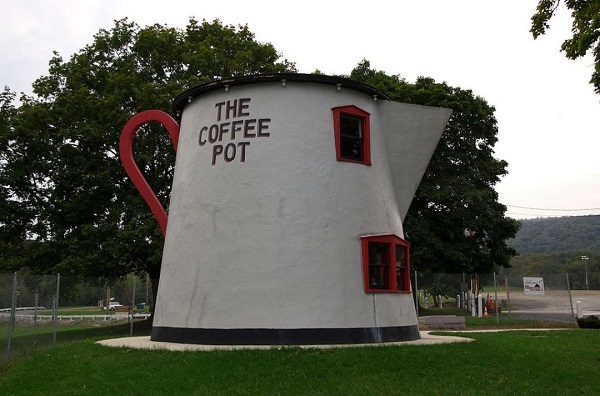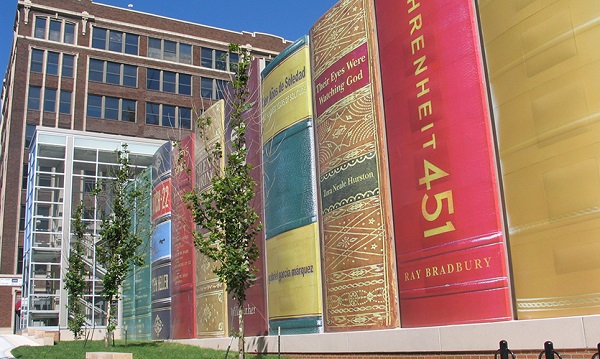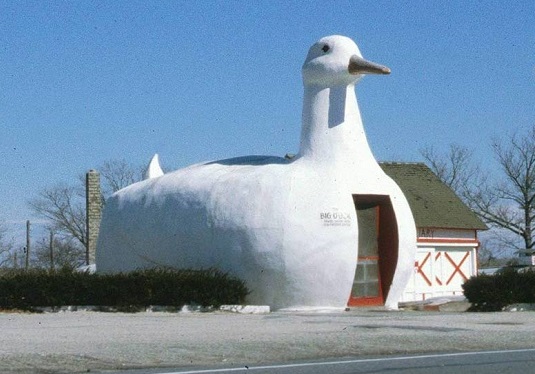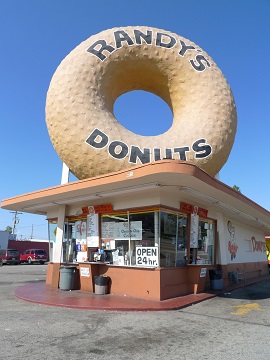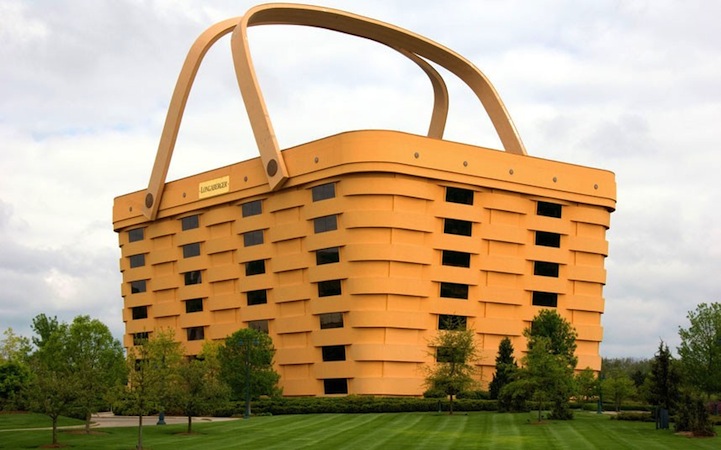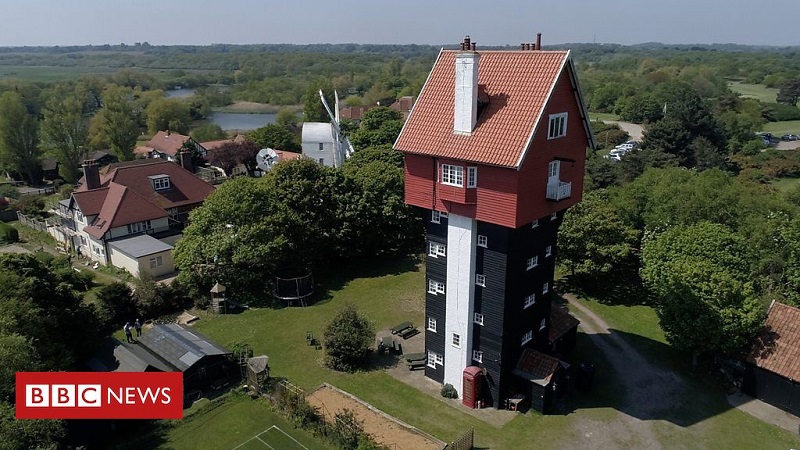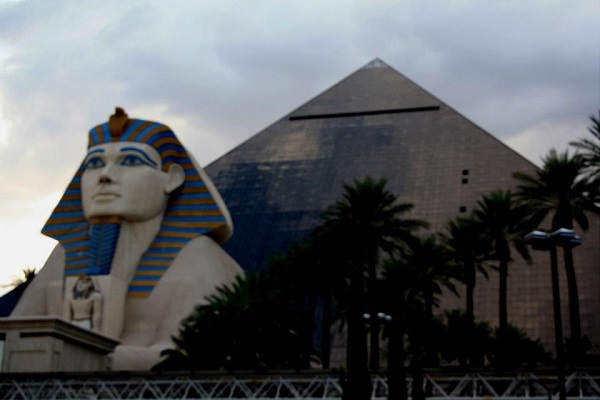Mimetic architecture
Mimetic architecture, also known as ‘novelty’ or ‘programmatic’ architecture, is a style of building design popularised in the United States in the first-half of the 20th century. It is characterised by unusual building designs that mimic the purpose or function of the building, or the product it is associated with.
Mimetic architecture was particularly popular between the 1920s and 1950s, as cars became widespread and freeways were built across America. Some roadside architecture started to be seen as a means for advertising to passing cars. For example, a roadside restaurant might be designed in the shape of a giant hot dog, a coffee shop in the shape of a coffee pot, or a fruit stand in the shape of a piece of fruit.
While mimetic architecture fell from favour after the 1950s and many such buildings were redeveloped or demolished, their size and novelty means that many are now viewed as local landmarks to be preserved.
[edit] Famous examples include:
Kansas City Public Library, Kansas City
Randy’s Donuts, California
The Big Basket, Newark
Water towers and storage tanks are often disguised in inventive ways, such as the House in the Clouds in Thorpeness (below).
Mimetic architecture can also refer to the replication of famous landmarks. This is popular in China, Japan and particularly, the United States. Perhaps the place where this is most synonymous is Las Vegas where buildings have been constructed that mimic an Egyptian pyramid (Luxor Las Vegas), the New York skyline (New-New York Hotel and Casino), the Eiffel Tower (Paris Las Vegas), a cartoon-medieval castle (Excalibur), the Rialto bridge (Venetian), and Roman classical architecture (Caesar’s Palace).
[edit] See our unusual buildings gallery HERE.
[edit] Related articles on Designing Buildings
- American architecture and construction.
- Architectural styles.
- Art Moderne.
- Big Duck.
- Britain’s greatest maverick building.
- Constructivist architecture.
- Dancing House, Prague.
- Dunmore Pineapple.
- Fish Building, India.
- Gereja Ayam.
- Haines Shoe House.
- Historical versus Modern: Identity through imitation.
- Lotus Temple.
- Luxor Las Vegas
- Metabolism.
- Piano Building.
- Skeuomorphism.
- Teapot building.
- Teapot Dome Service Station.
- The Big Basket.
- The Kelpies.
- The Oculus.
- Unusual building design of the week.
Featured articles and news
Experimental AI housing target help for councils
Experimental AI could help councils meet housing targets by digitising records.
Gregor Harvie argues that AI is state-sanctioned theft of IP.
Preserving, waterproofing and decorating buildings.
Many resources for visitors aswell as new features for members.
Using technology to empower communities
The Community data platform; capturing the DNA of a place and fostering participation, for better design.
Heat pump and wind turbine sound calculations for PDRs
MCS publish updated sound calculation standards for permitted development installations.
Homes England creates largest housing-led site in the North
Successful, 34 hectare land acquisition with the residential allocation now completed.
Scottish apprenticeship training proposals
General support although better accountability and transparency is sought.
The history of building regulations
A story of belated action in response to crisis.
Moisture, fire safety and emerging trends in living walls
How wet is your wall?
Current policy explained and newly published consultation by the UK and Welsh Governments.
British architecture 1919–39. Book review.
Conservation of listed prefabs in Moseley.
Energy industry calls for urgent reform.
Heritage staff wellbeing at work survey.
A five minute introduction.
50th Golden anniversary ECA Edmundson apprentice award
Showcasing the very best electrotechnical and engineering services for half a century.
Welsh government consults on HRBs and reg changes
Seeking feedback on a new regulatory regime and a broad range of issues.







